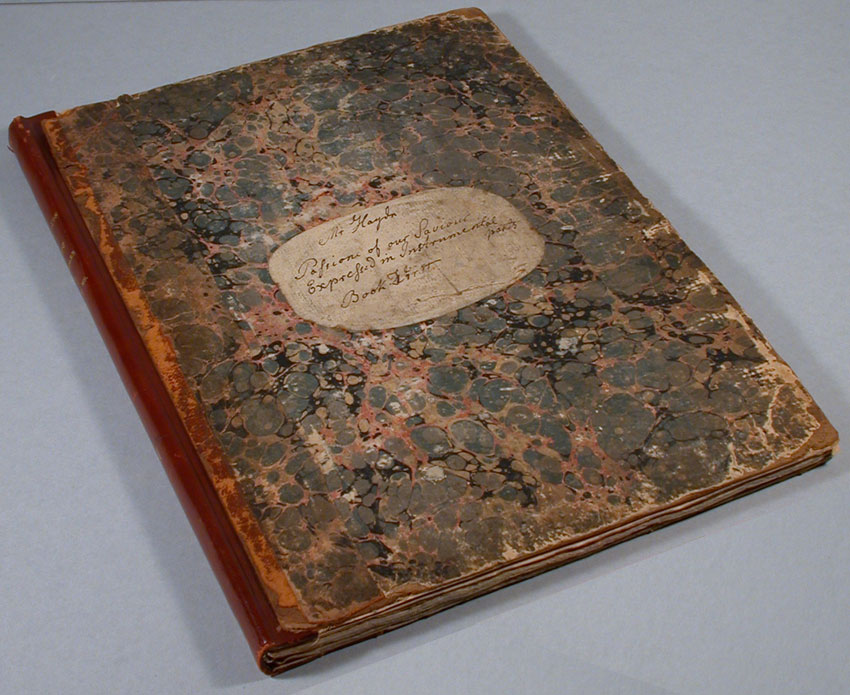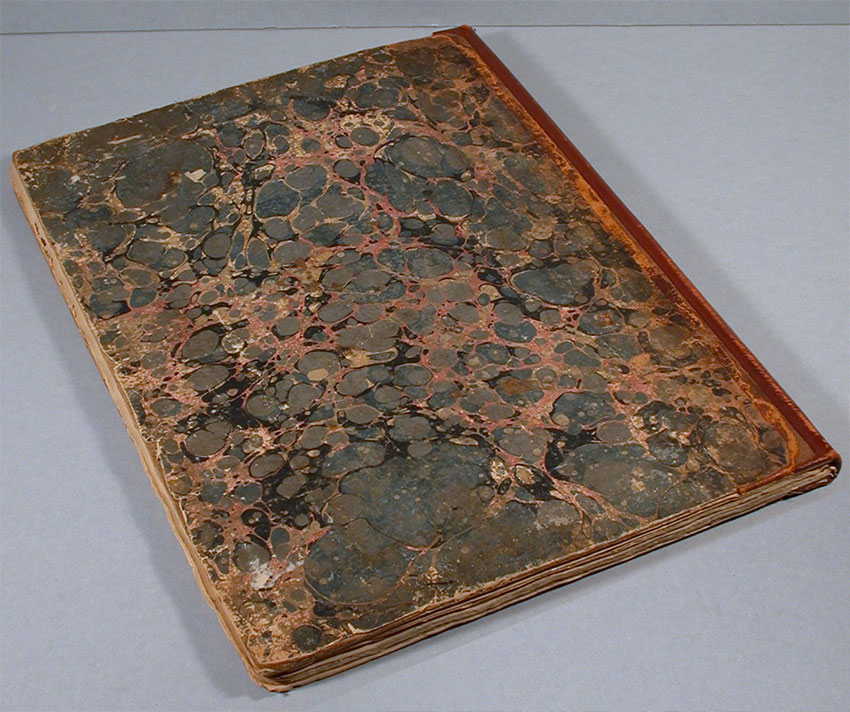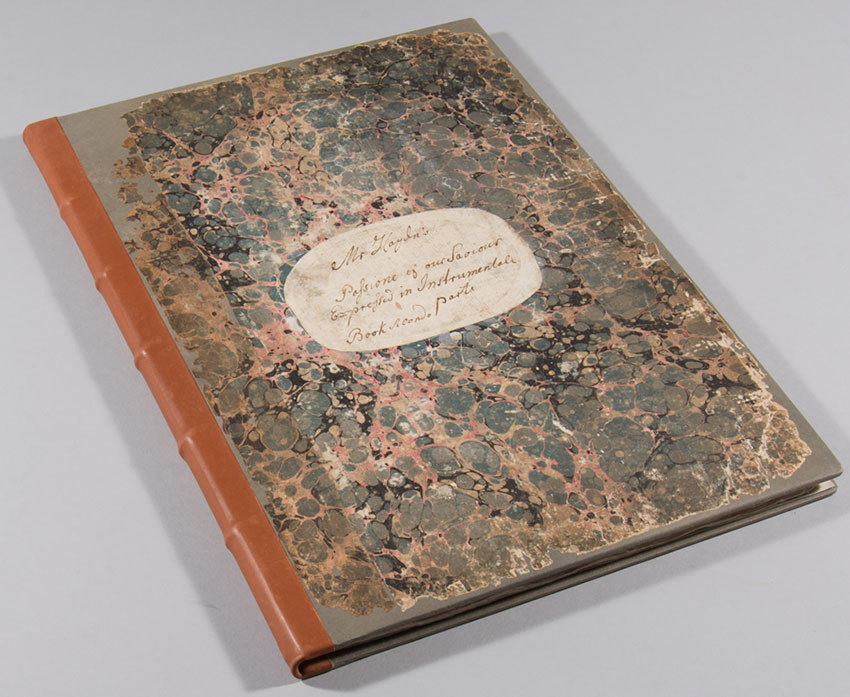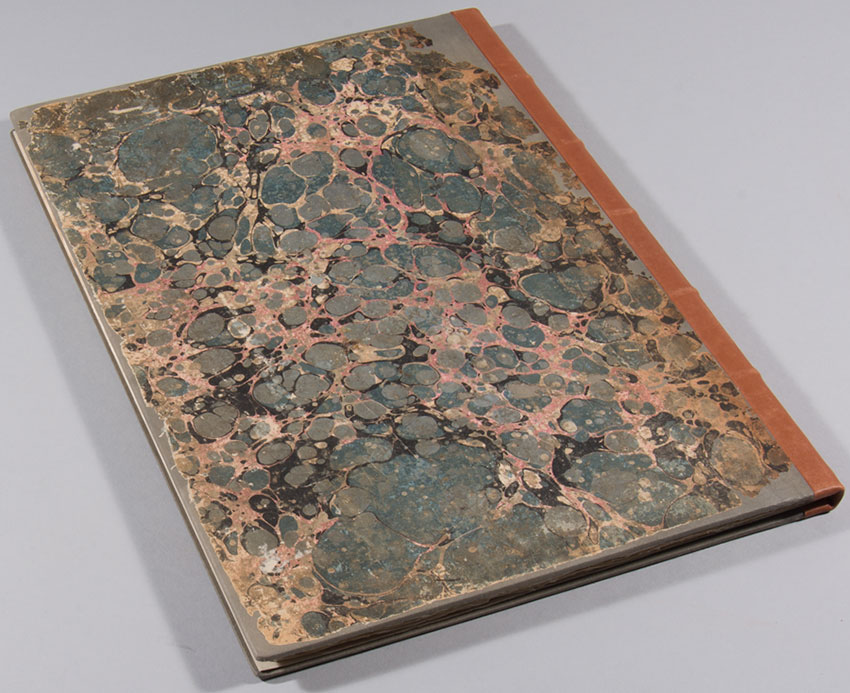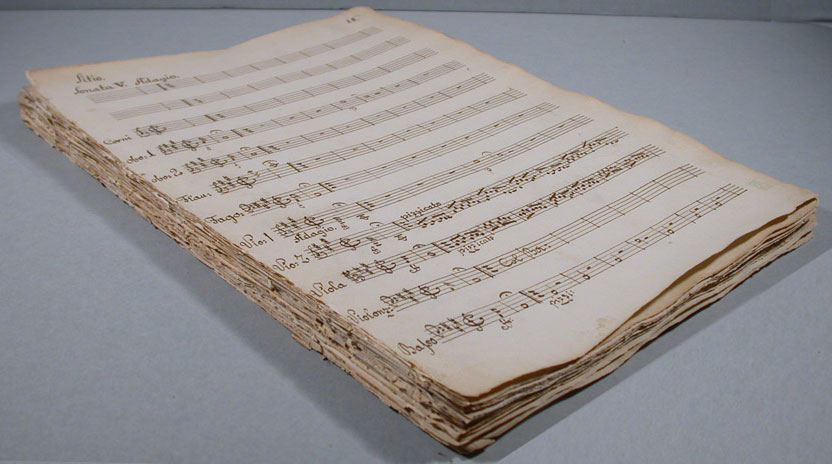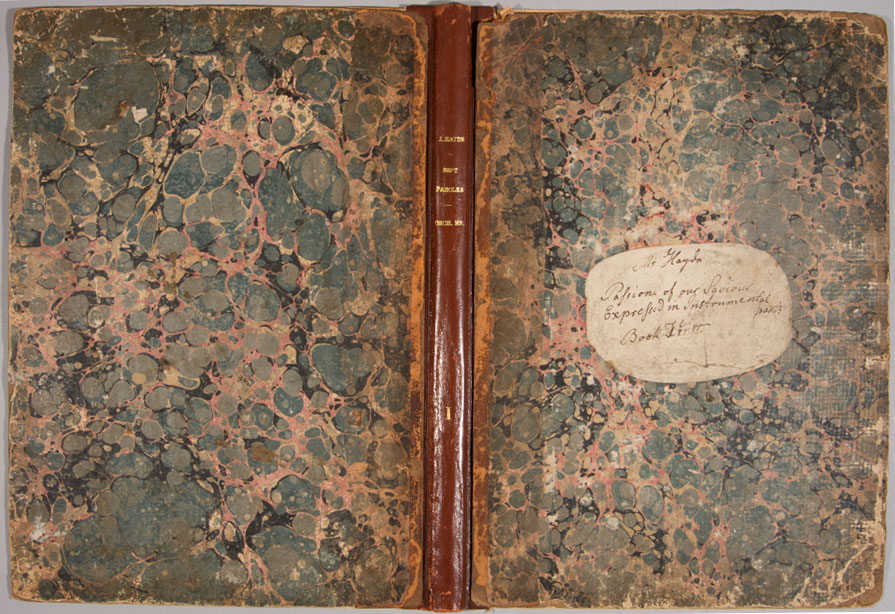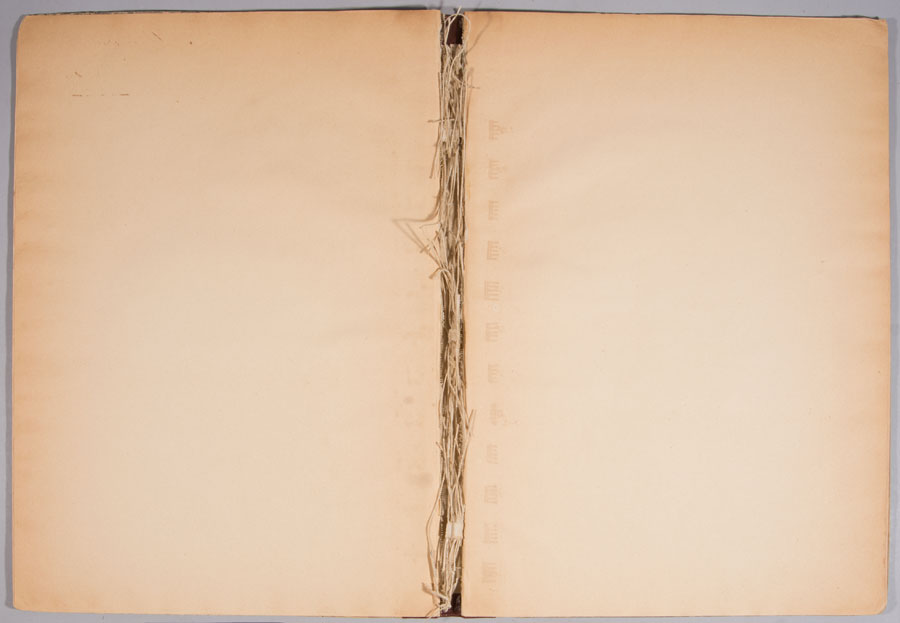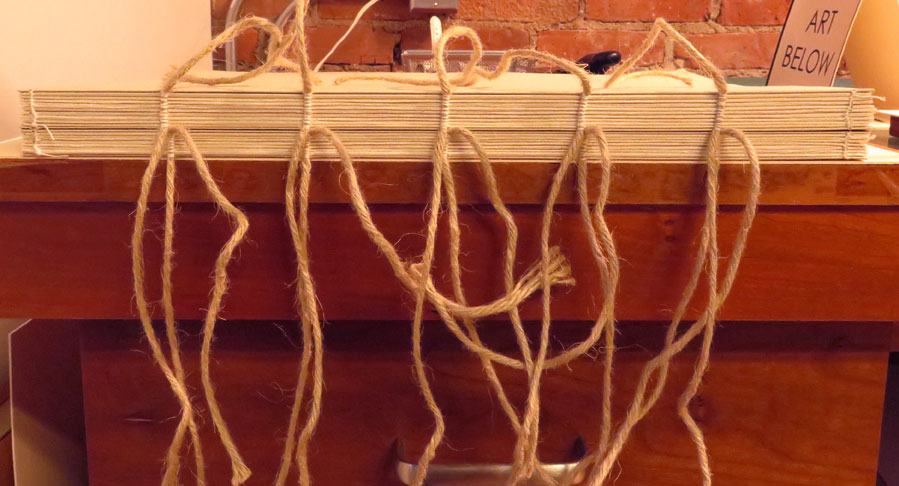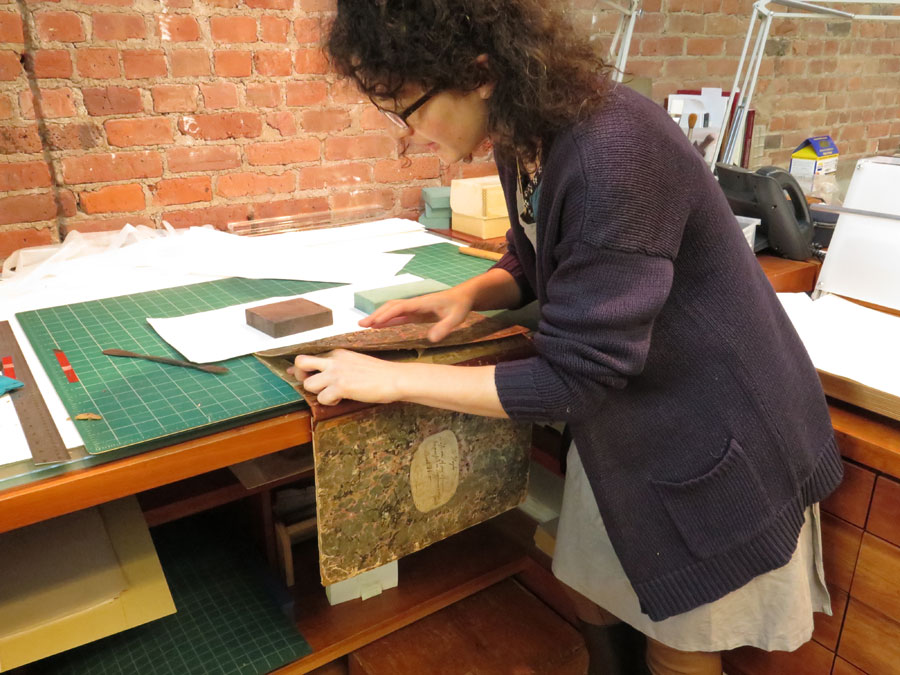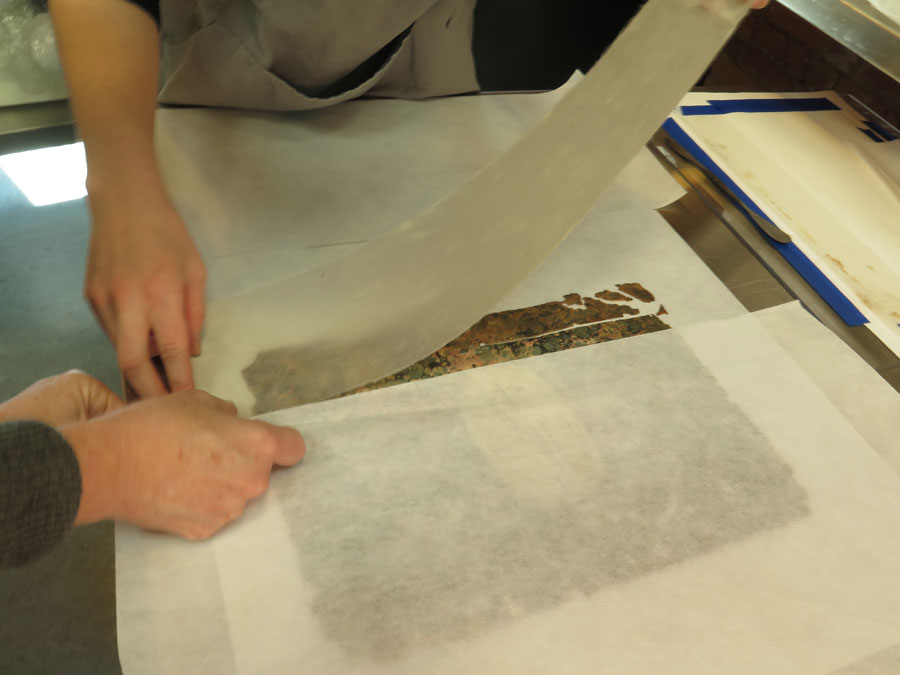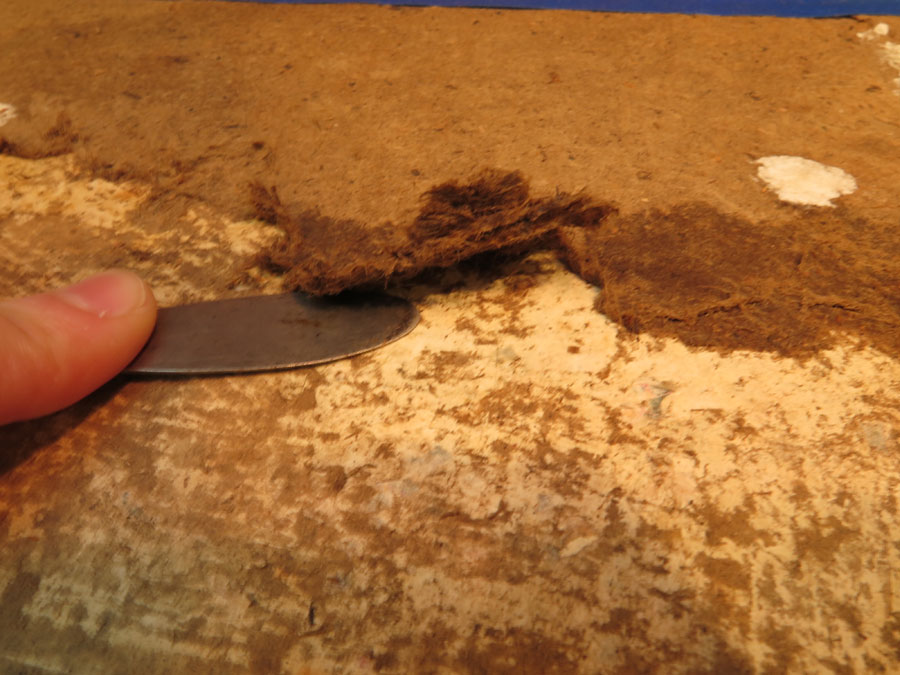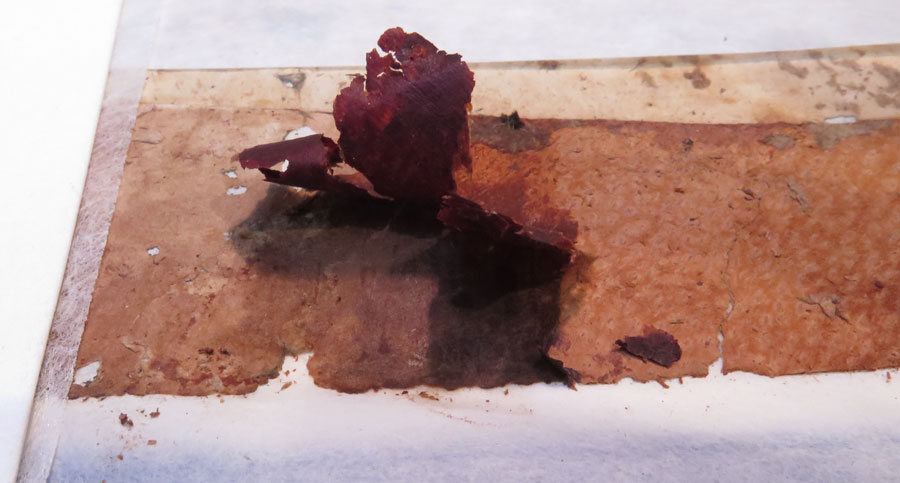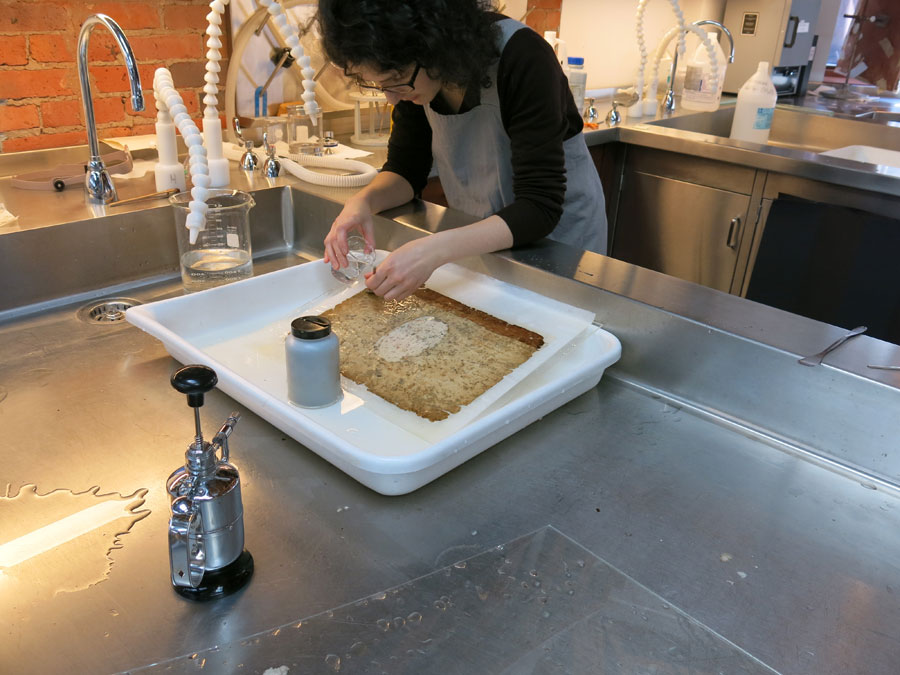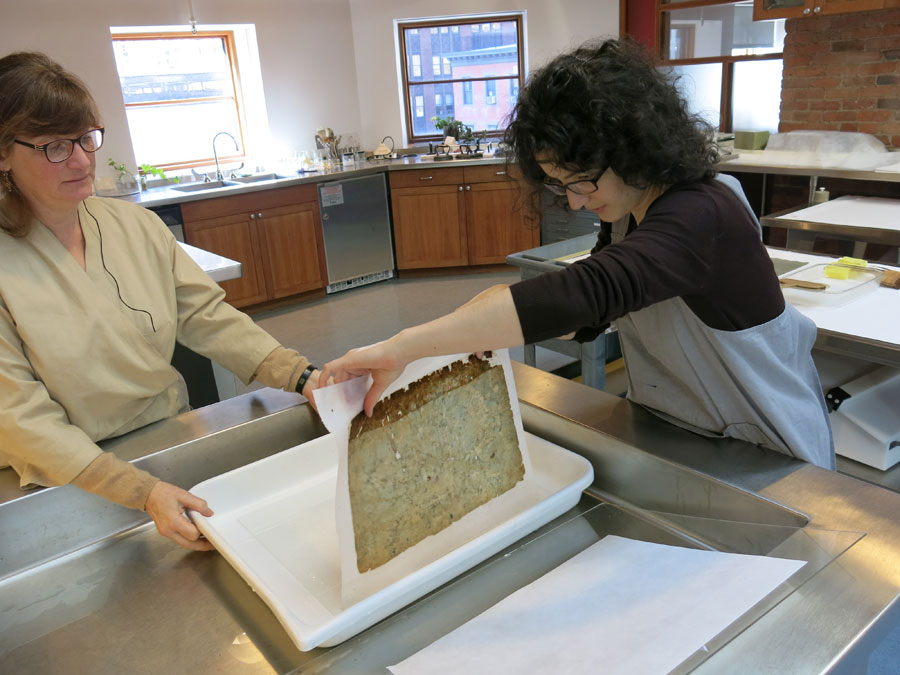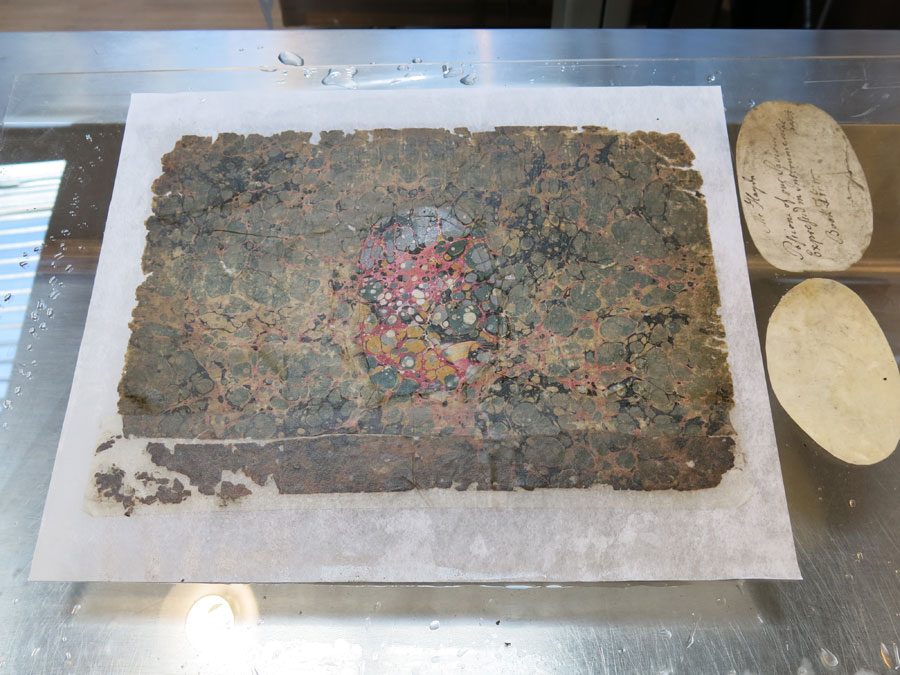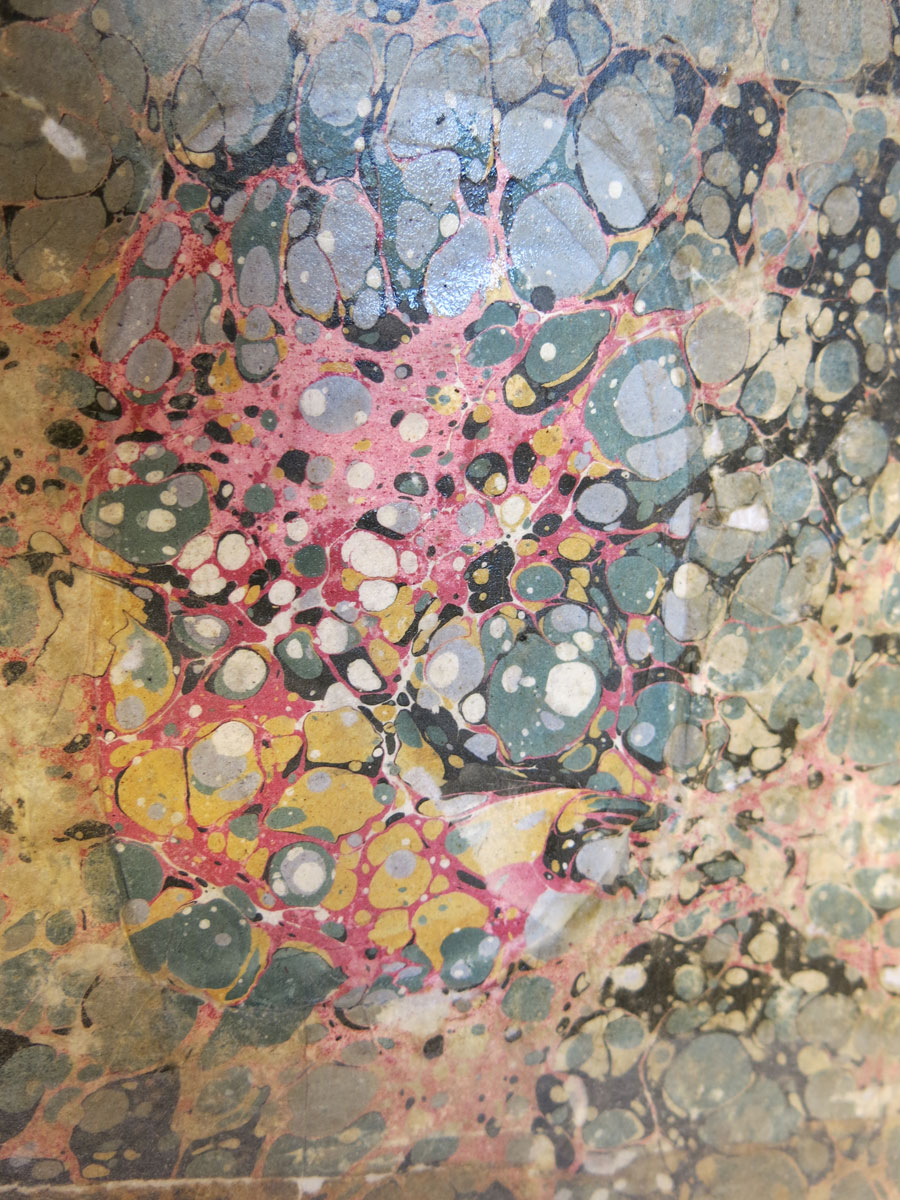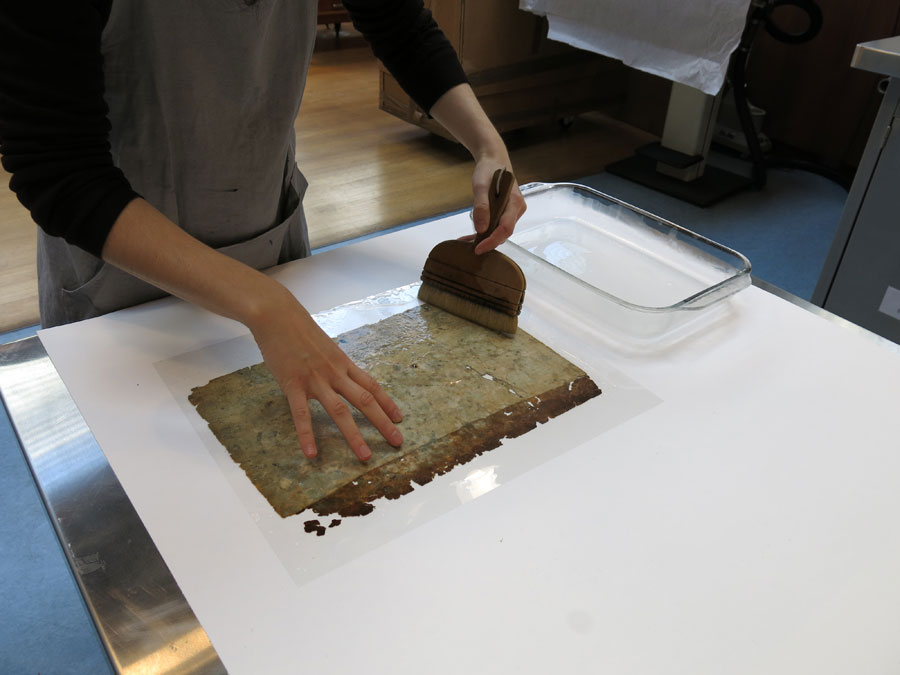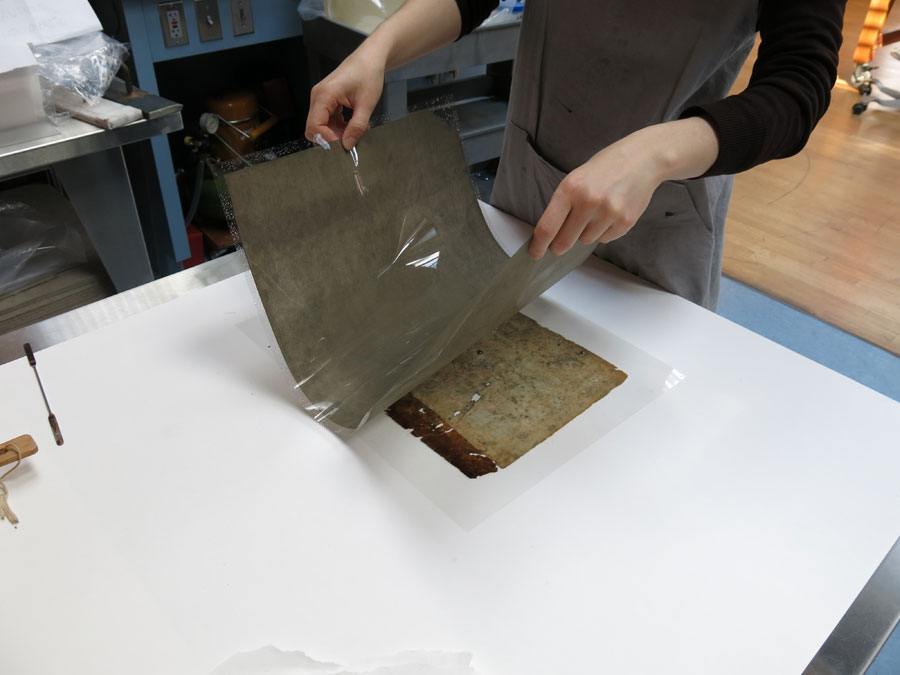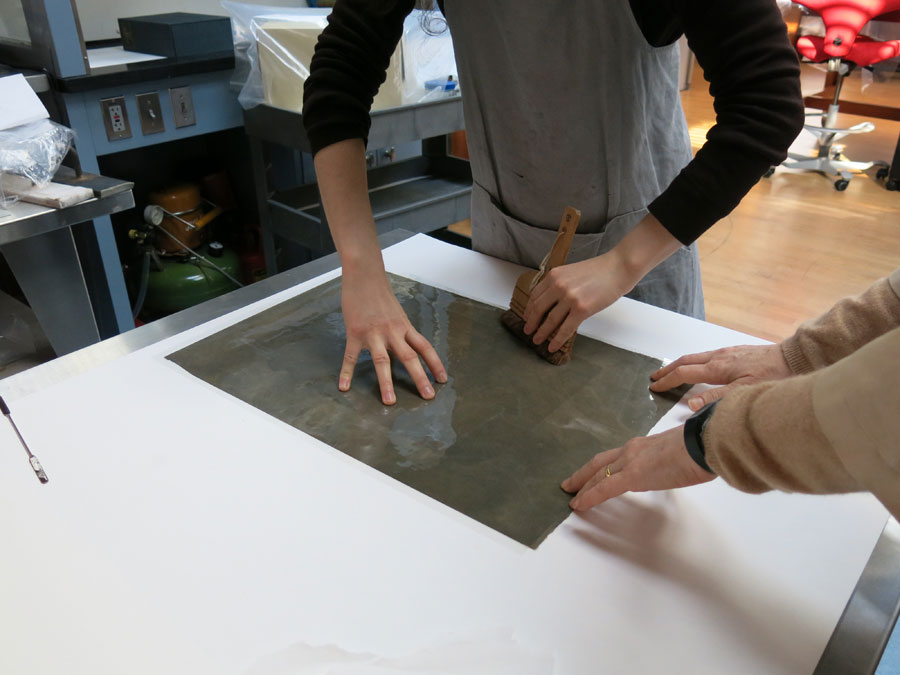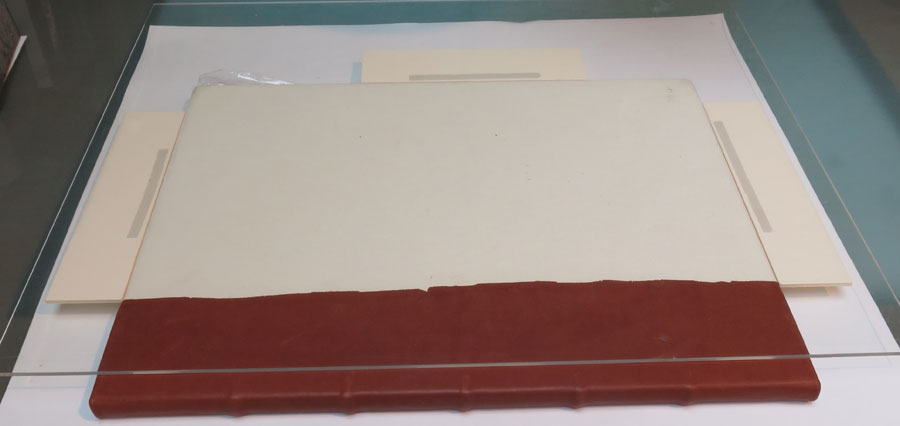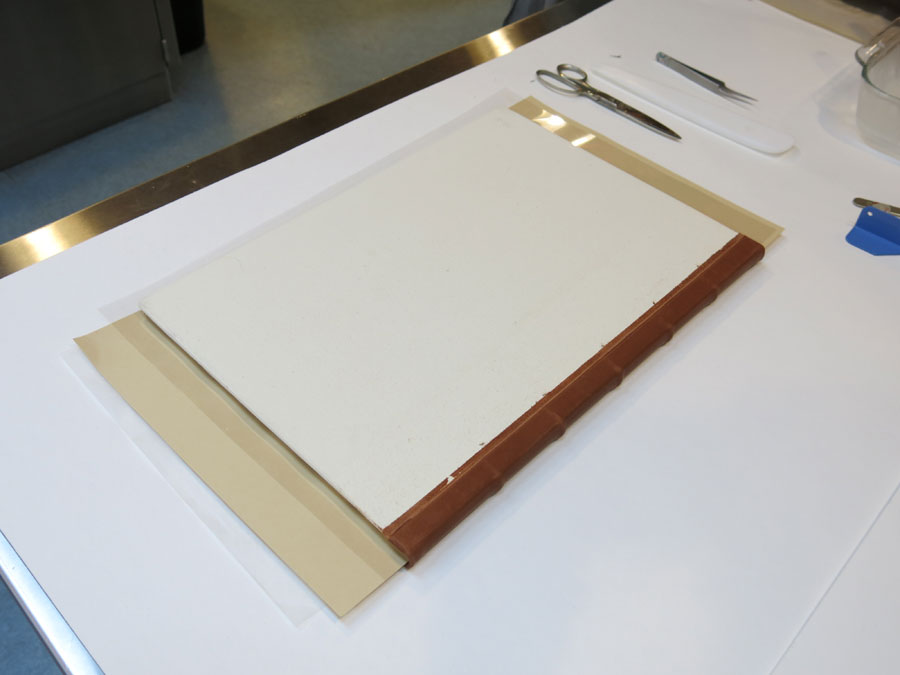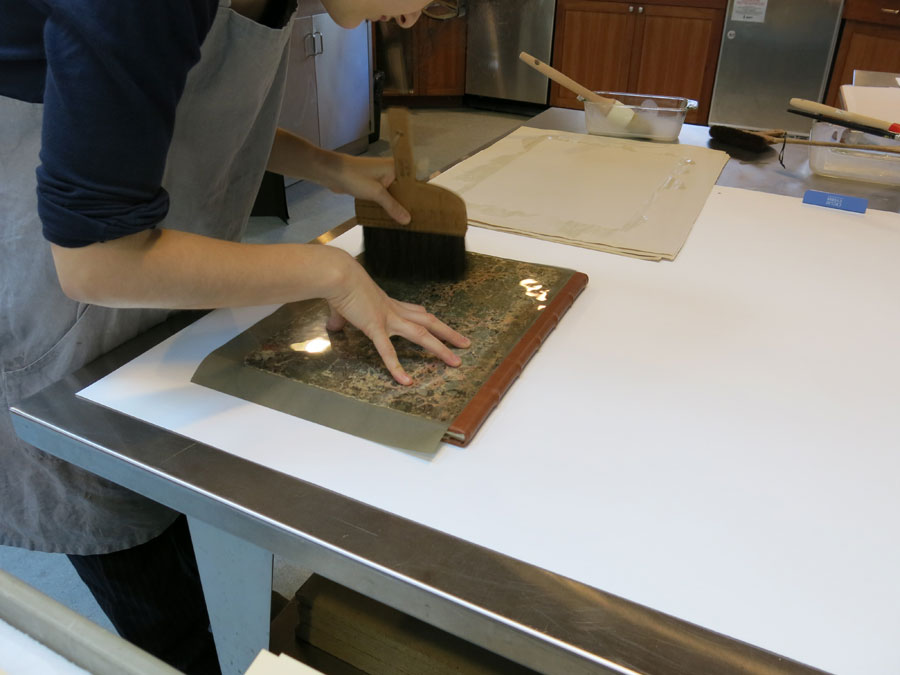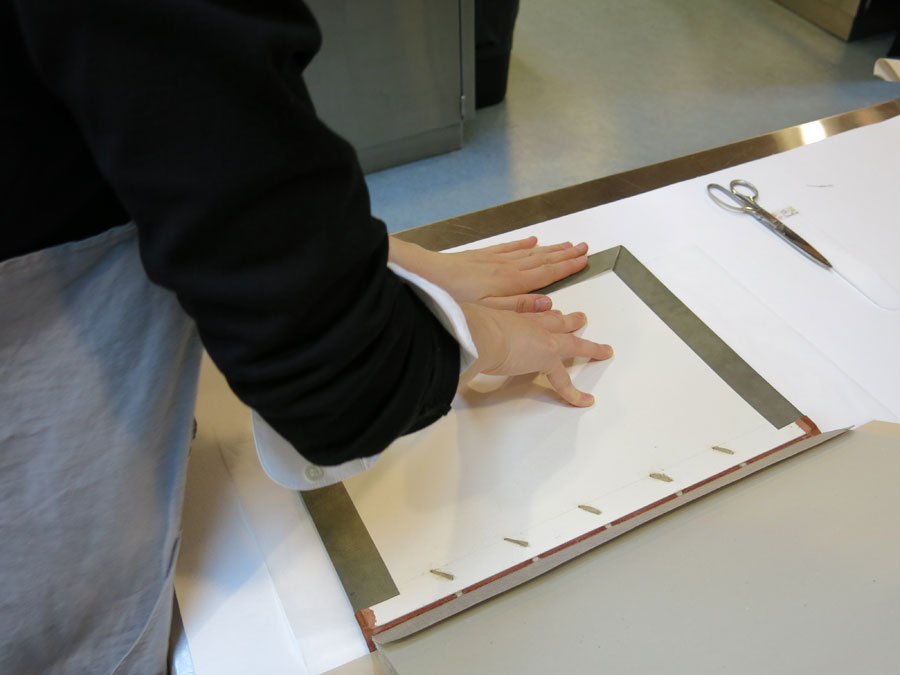This post was created by Justine Provino, Pine Tree Foundation Post Graduate Fellow in Book Conservation in consultation with Maria Fredericks, Drue Heinz Book Conservator and Acting Director of the Thaw Conservation Center.
In 1786, the Clergy of the Cadiz cathedral in Spain commissioned Joseph Haydn (1732–1809) to compose The Seven Last Words of our Saviour on the Cross. In 1791, a copyist’s manuscript of the full orchestral score, with annotations by Haydn himself was prepared for a series of concerts to be held in London. The score was bound into two separate volumes, each with a brown calfskin leather spine and marbled paper sides.
The manuscript entered the Morgan Library & Museum in 1968 as part of the Mary Flagler Cary collection of manuscripts, letters, and printed scores. By this time, both volumes had been extensively repaired using poor-quality materials, resulting in deteriorated bindings and fragile pages that could not be safely handled.
A pre-digitization survey of the music manuscript collection in 2008 drew attention to the poor condition of the Haydn manuscript and its bindings. The leather spines had been replaced with a modern synthetic material, and what remained of the original leather was desiccated and powdery. The 18th-century marbled paper used on the covers was soiled and abraded, while the paperboard covers themselves were delaminating. The sewing in each volume was broken in many areas. Many pages of the score itself were dirty and torn, and had been repaired with stiff machine-made paper that was not compatible with the original. Microchemical testing revealed the presence of unstable iron ions in the brown iron-gall ink used to write the manuscript. These ions accelerate acidic deterioration of both ink and paper. After consultation with the curator, conservators made the decision to disbind the manuscript so that both the paper textblocks and their bindings could be brought to a stable and usable condition. After removal of the damaging prior repairs, the pages were immersed in an alkaline solution of deionized water and calcium hydroxide to reduce acidic components in the paper and the ink. The textblocks were then digitized and stored unbound with the untreated covers until 2015, when a full rebinding treatment was begun.
Rebinding started with the attachment of new Japanese paper guards to the spine edge of each paper leaf, using wheat starch paste to reinforce the spine folds for sewing. The two volumes were re-sewn, using flax cords as the supports. The re-sewn spines were lined with long-fibered Japanese paper, then with natural linen fabric, leaving an overhanging flange on each side. This flange was used to help attach the textblock to the new covers later in the conservation process.
To save the original 18th-century marbled cover papers, the old brittle paperboards were peeled away in layers from the reverse, using a combination of dry and wet techniques. The marbled paper was faced with Japanese paper and paste to keep it together during this phase of treatment. Once freed from the old paperboard, the marbled papers were placed face down on a sheet of Tek-Wipe® (polyester and cellulose non-woven textile) supported by a Plexiglas® "slant board". Warm deionized water and gentle brushing was used to remove adhesive and paperboard residues from the verso. The facing was then removed from the recto of the marbled paper. During this process, the hand written labels were released, revealing the brilliant, unfaded orginal colors of the marbled paper below.
This paper was weak with many losses, and a lightweight Japanese paper lining was needed to add strength and flexibility to the original cover material. The lining paper was toned with acrylic paint to blend with the ovreall tone of the faded marbled paper.
New cover boards were built by laminating a 4-ply rag board core between sheets of a smooth, soft, cotton rag paper. Holes were punched in the covers and the linen cord sewing supports were laced through to form the attachment.
A strip of brown vegetable-tanned calfskin, similar in color to the original leather, was used to cover the spine. The lined marbled paper and the original paper title labels were mounted onto the new covers to complete the binding.
This time- and labor-intensive approach to treatment preserves the material authenticity of Haydn’s score, creating two conservation bindings that retain as much as possible of the original material while making the score safe to handle and display. Although the acidic boards and the original leather were too deteriorated to save, the 18th century marbled papers and handwritten labels were mounted onto new structures that were carefully designed to open flat, without undue flexing of the fragile manuscript leaves.Thanks to comprehensive digital imaging which has provided online access to the manuscript's content and conservation treatment that answers the long-term preservation of the artifact itself, scholars and exhibition visitors may now experience the score in both digital and material forms.
"The outcome of the conservation treatment of the Haydn manuscript is truly stunning. Not only has the manuscript's appearance been miraculously rejuvenated, but most importantly it can be easily handled now without fear of stressing the original."
Frances Barulich
Mary Flagler Cary Curator of Music Manuscripts and Printed Music
Justine Provino is the 2015–17 Pine Tree Foundation Post Graduate Fellow in Book Conservation. She holds M.A. degrees in Medieval History from the Paris-Sorbonne University (Paris IV) and Conservation of Cultural Heritage from the Pantheon-Sorbonne University (Paris I).

